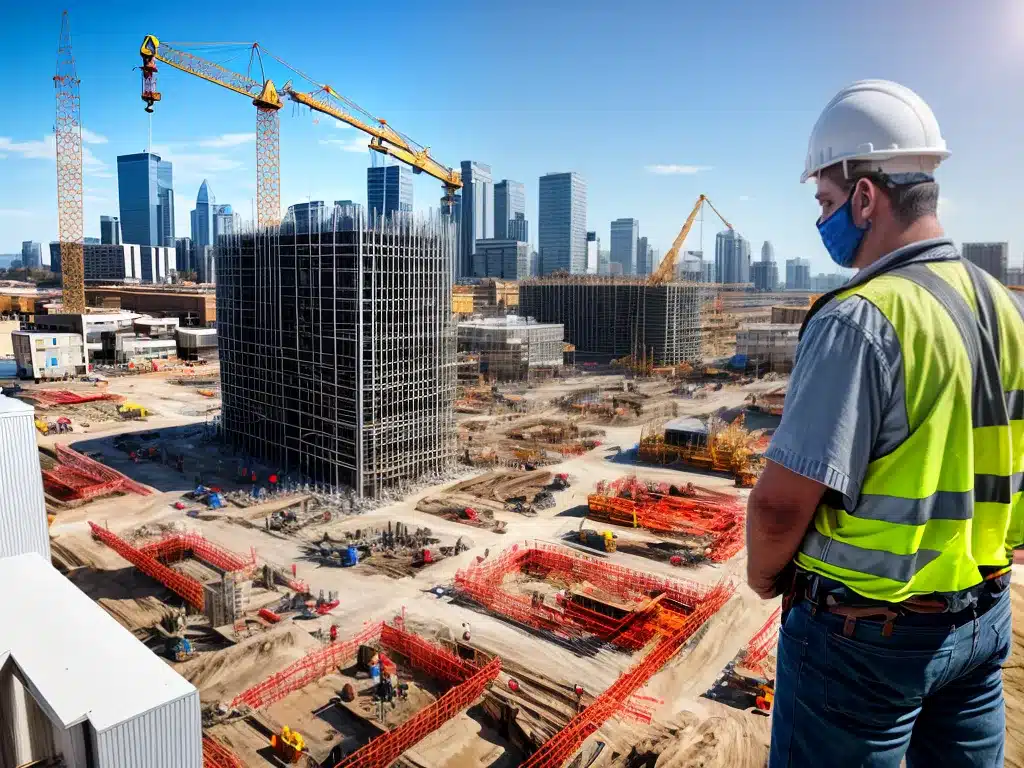
Construction Sites Get Smarter with IoT in 2024
Introduction
The Internet of Things (IoT) is transforming the construction industry. By integrating connected devices and sensors, construction sites are becoming smarter and more efficient. In 2024, we can expect to see even greater adoption of IoT on construction sites, leading to improved safety, productivity, and sustainability. As an industry professional, I am excited by the potential of these innovations and how they will shape the future of construction.
Key IoT Applications in Construction
Improved Safety and Accident Prevention
One of the biggest promises of IoT is enhancing safety and preventing accidents on construction sites. Sensors can track the location of workers and heavy machinery in real-time, alerting managers if they get too close and risk collision. Wearable devices can monitor vital signs and detect fatigue, preventing accidents caused by exhaustion. Environmental sensors can detect hazardous gases, radiation, or microparticles in the air to avoid health risks. With proactive accident and injury prevention, construction sites will become significantly safer by 2024.
Increased Efficiency and Productivity
IoT-connected devices will make construction workflows faster, more efficient, and productive. Location tracking can optimize routes and material delivery. Automated inventory management reduces wait times for parts and tools. Sensor data can closely monitor project timelines and uncover potential delays before they happen. Managers will have real-time analytics to improve planning and decision making. Overall, IoT integration dramatically boosts efficiency, leading to faster project timelines and lower costs.
Enhanced Quality Control
Sensors and scanning technologies can deliver improved quality control during construction. Automated, IoT-enabled inspection drones can monitor build quality in hard to reach areas. Image recognition software can analyze photos and detect flaws or deviations from design plans. Wearables can assist workers with step-by-step directions to ensure perfection. Instead of manual post-construction inspections, real-time quality control means issues are addressed immediately, resulting in buildings and infrastructure with excellent quality.
Optimized Energy Use and Sustainability
IoT sensors measure energy and resource use, alerting site managers to wastage or overconsumption. IoT-connected machinery can automatically adjust activity based on demand to avoid excess energy expenditure. Data analytics identify optimization opportunities for energy, water, and materials. With real-time sustainability insights, construction firms can dramatically reduce environmental impact. The result is greener, more efficient construction sites.
Key Challenges to Address
Cybersecurity Risks
With exponential growth in connected devices, cybersecurity threats are a major concern. Hackers could exploit vulnerabilities to take control of machinery, steal data, or sabotage projects. Construction firms will need to implement robust cybersecurity measures and educate employees on risks. Data encryption, access controls, and identity management will be critical safeguards.
Data Management Difficulties
The volume of data generated by hundreds of IoT sensors will be enormous. Construction firms will need infrastructure and skills for managing, processing, and analyzing massive amounts of data. Cloud computing and storage will become essential data management tools. Investment in data science talent will also drive successful data strategies.
Interoperability Issues
A key challenge is ensuring solutions from different vendors can communicate and function seamlessly. Construction sites use diverse machinery, sensors, and software across multiple providers. Developing universal connectivity protocols and standards will be instrumental. Constructing an open, integrated IoT ecosystem must be a priority.
The Future with IoT Construction
Implementing IoT on construction sites will profoundly transform the industry. Based on current adoption trends, we can expect rapid growth in connected devices, wearables, and sensors on sites by 2024. With real-time data and insights, the work environment will be safer, efficient, and collaborative like never before. Construction firms need to act today to implement robust IoT strategies and unlock the future. While challenges remain, the tremendous benefits make construction site IoT integration an indispensable innovation.












